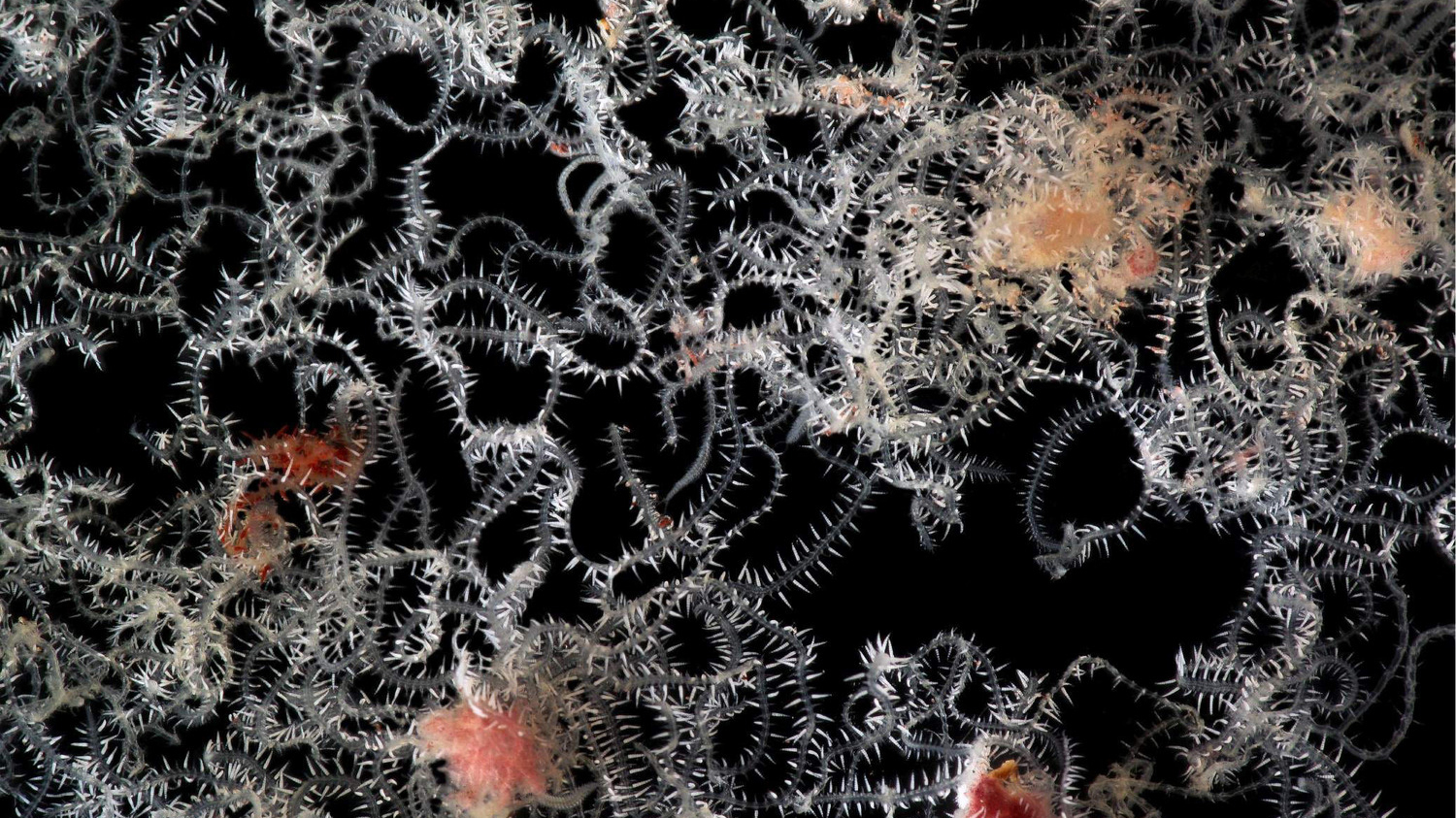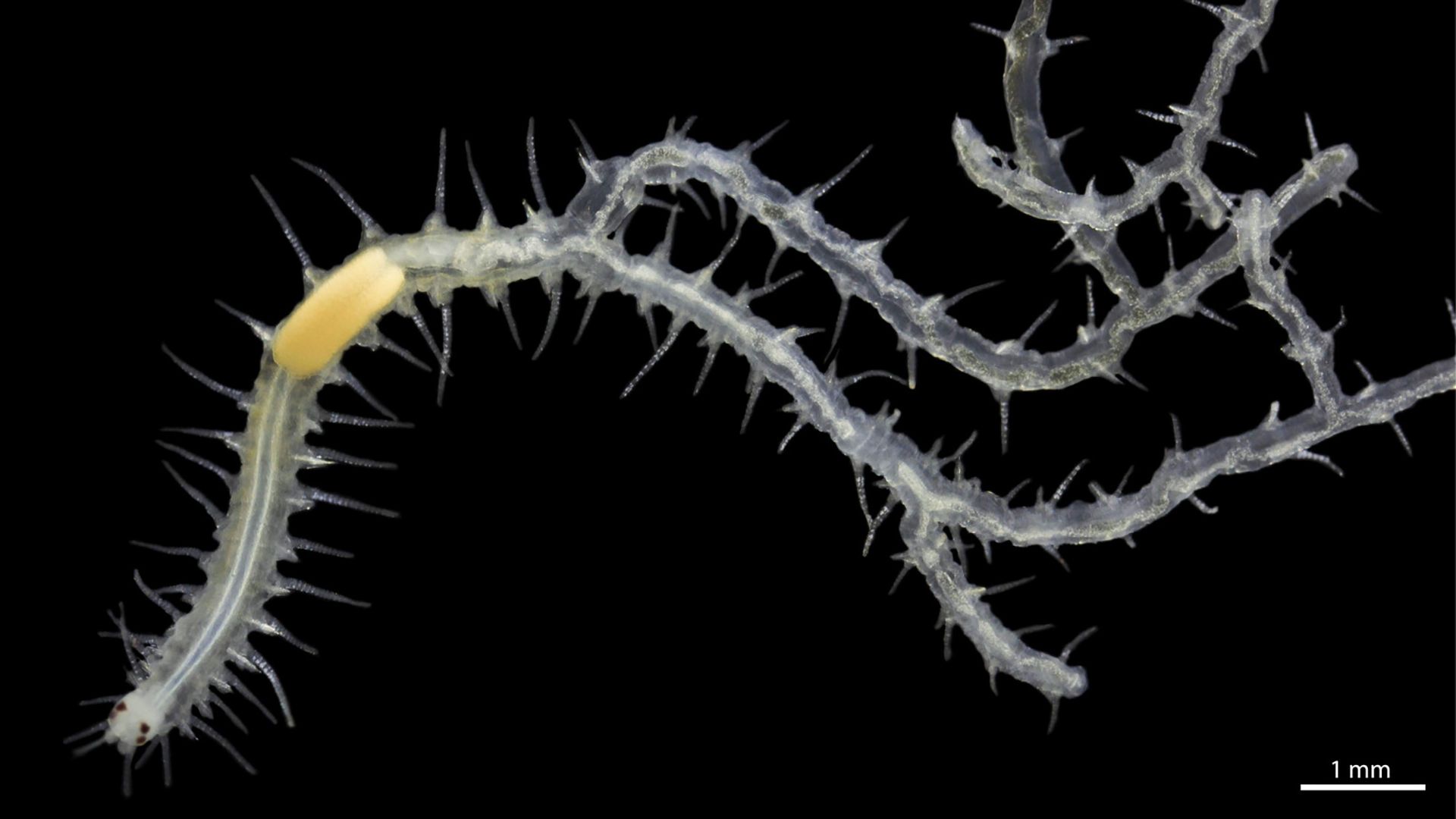Meet the marine worm with 100 butts that can each grow eyes and a brain
Here a butt, there a butt; everywhere a butt butt.

How many butts is too many? One is usually enough for most animals — unless you're a type of marine worm with a body that divides from a single head into dozens of different directions, and each of those branches ends in a butt.
The worms' weirdness doesn't stop at multiple butts, either. When the worms are ready to reproduce, their butts can grow eyes and a brain.
At this point, you probably have questions; unsurprisingly, scientists did, too. So they peered inside the branching bodies of this many-butted ocean weirdo, which is named Ramisyllis multicaudata and lives in waters near Darwin, Australia. For the first time, researchers have described the oddball creatures' internal anatomy, revealing that the worms' insides are just as peculiar as their outsides.
(Well, almost.)
Related: Extreme life on Earth: 8 bizarre creatures
R. multicaudata is a segmented worm, or annelid, in the family Syllidae. There are about a thousand described species in that family, but only two of them grow massive, branching bodies: R. multicaudata and the deep-sea worm Syllis ramosa.
Branching bodies are quite common in plants and fungi, but in animals this type of body plan is virtually unheard of, according to the Australian Academy of Science. When biologist William McIntosh described S. ramosa in 1879, he remarked on this surprising ability, noting that the annelid had "a furor for budding," scientists reported in a new study, published April 4 in the Journal of Morphology.
Get the world’s most fascinating discoveries delivered straight to your inbox.
Prior examinations of R. multicaudata, which was discovered in 2006 and named in 2012, documented "a high number" of anal openings, or ani, with "one per each posterior end," according to the new study. Those posterior bits become even more interesting once the worm is ready to reproduce. Segmented units called stolons form in the worm's butt ends, producing not only sexual organs but also "a simple head with its own eyes," the scientists reported. "Once a stolon is ready, it detaches from the rest of the body and swims freely until it mates and dies."
However, the inner workings of these free-swimming stolons — and of the worms' internal anatomy — was almost entirely unknown. The researchers therefore turned to microscopy, X-ray computed microtomography (micro-CT) scans, tissue staining and chemical analysis to identify the worms' organs and anatomical systems, and to reconstruct them digitally in 3D.
Butt brains
They discovered that there was a brain and nervous system in the stolons, with a dense ring of serotonin-releasing nerve endings positioned just behind each stolon's head. The notion of stolons possessing an autonomous brain was an idea that had been proposed in the 19th century "but had not been confirmed since then," lead study author Guillermo Ponz-Segrelles, a zoologist at the Autonomous University of Madrid, told Live Science in an email.
In the rest of R. multicaudata's body, blood vessels stretched through all the branches, but the researchers found no structures resembling hearts. Circulatory and digestive organs divided and branched wherever the body did, and robust "muscle bridges" — thickened muscular structures that had never been seen before in worms — formed at the junction of each new branch. By analyzing the shapes of these bridges, the scientists could tell which body branches were older and which had formed more recently, they wrote in the study.
Another unusual discovery was that even though the worms' digestive system seemed to be functional, "their intestines seem to be always empty," Ponz-Segrelles said.
R. multicaudata spends much of its adult life embracing a sponge host, with the worm's head buried deep inside the sponge. The scientists' X-rays and digital 3D models showed for the first time that the worm's entire branching body was also deeply embedded in its host, with the worm's branches extending through "a notable portion" of the mazelike canals that were part of the sponge's internal anatomy.
"Our research solves some of the puzzles that these curious animals have posed ever since the first branched annelid was discovered at the end of the 19th century," said study co-author Maite Aguado, a curator of animal evolution and biodiversity in the Biodiversity Museum of Göttingen in Germany.
"However, there is still a long way to go to fully understand how these fascinating animals live in the wild," Aguado said in a statement. "For example, this study has concluded that the intestine of these animals could be functional, yet no trace of food has ever been seen inside them and so it is still a mystery how they can feed their huge branched bodies. Other questions raised in this study are how blood circulation and nerve impulses are affected by the branches of the body," she said.
Originally published on Live Science.

Mindy Weisberger is a science journalist and author of "Rise of the Zombie Bugs: The Surprising Science of Parasitic Mind-Control" (Hopkins Press). She formerly edited for Scholastic and was a channel editor and senior writer for Live Science. She has reported on general science, covering climate change, paleontology, biology and space. Mindy studied film at Columbia University; prior to LS, she produced, wrote and directed media for the American Museum of Natural History in NYC. Her videos about dinosaurs, astrophysics, biodiversity and evolution appear in museums and science centers worldwide, earning awards such as the CINE Golden Eagle and the Communicator Award of Excellence. Her writing has also appeared in Scientific American, The Washington Post, How It Works Magazine and CNN.




